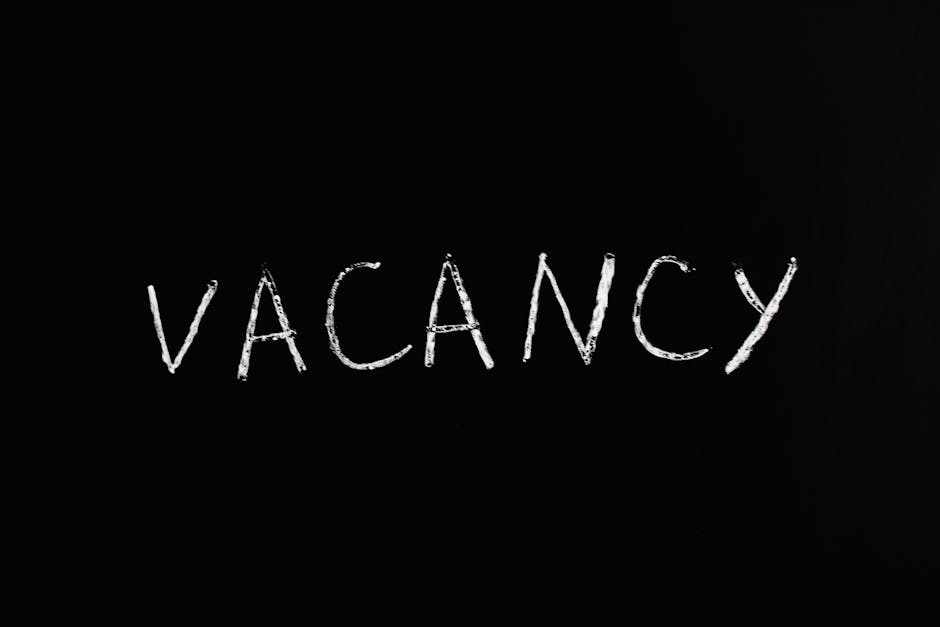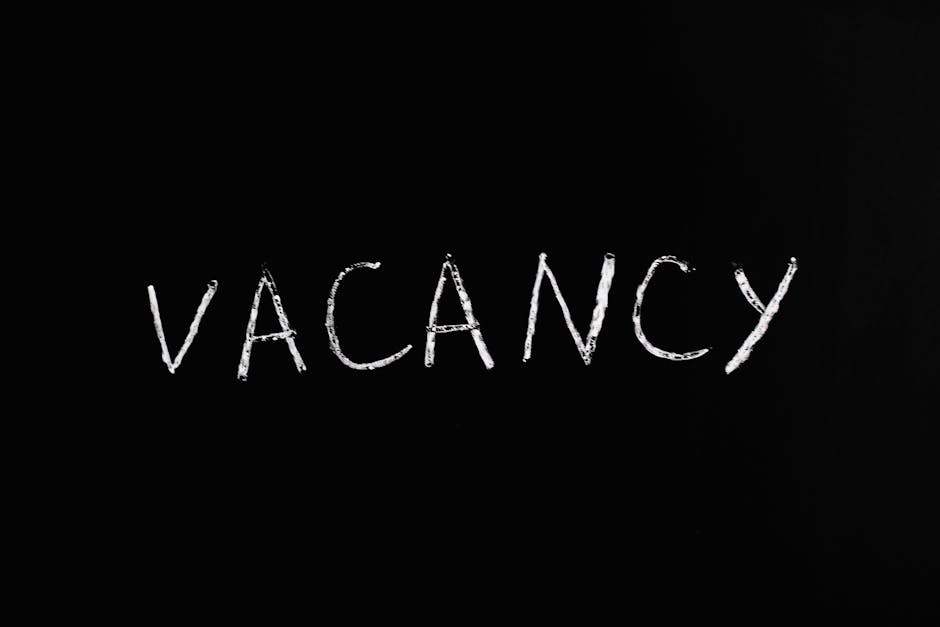Table of Contents
“Unplug to Unwind: Discover the Hidden Cost of Constant Connectivity.”
Introduction
In today’s hyper-connected world, the expectation to be constantly available has become the norm, blurring the lines between work and personal life. This phenomenon, often fueled by advancements in technology and the rise of remote work, carries a hidden price that many individuals overlook. The relentless demand for immediate responses and the pressure to remain engaged can lead to significant mental and emotional strain, resulting in burnout, decreased productivity, and strained relationships. As we navigate this landscape, it is crucial to examine the implications of perpetual availability and to seek a balance that prioritizes well-being over constant connectivity.
The Impact on Mental Health
In an era characterized by constant connectivity, the expectation to be perpetually available has profound implications for mental health. The advent of smartphones and social media has blurred the lines between work and personal life, creating an environment where individuals feel compelled to respond to messages, emails, and notifications at all hours. This relentless demand for availability can lead to significant psychological stress, as individuals grapple with the pressure to remain engaged and responsive.
Research indicates that the inability to disconnect from work-related communications can contribute to heightened levels of anxiety and burnout. When individuals are always “on,” they often experience a sense of urgency that can be overwhelming. This state of hyper-vigilance not only disrupts the ability to relax but also diminishes the quality of personal relationships. As people prioritize their digital interactions over face-to-face connections, feelings of isolation can emerge, further exacerbating mental health issues.
Moreover, the phenomenon of “FOMO,” or the fear of missing out, is intensified by the constant stream of information available through social media platforms. Individuals may feel pressured to stay updated on social events, professional developments, and personal milestones, leading to a perpetual state of comparison and inadequacy. This can foster feelings of low self-esteem and dissatisfaction, as individuals measure their lives against the curated highlights of others. Consequently, the pressure to remain available and engaged can create a cycle of negative self-perception and emotional distress.
In addition to anxiety and low self-esteem, the impact of always being available can manifest in physical health issues, which in turn affect mental well-being. Chronic stress, often a byproduct of the inability to disconnect, can lead to sleep disturbances, fatigue, and a weakened immune system. The relationship between physical and mental health is well-documented; when one suffers, the other often follows suit. Thus, the hidden price of constant availability extends beyond mental health, infiltrating various aspects of an individual’s life.
Furthermore, the workplace culture that glorifies over-commitment and constant availability can perpetuate these issues. Employees may feel that they must sacrifice their personal time to demonstrate dedication and productivity. This expectation can lead to a toxic work environment where mental health is undervalued, and individuals are reluctant to seek help for fear of being perceived as less committed. As a result, organizations may inadvertently contribute to a cycle of stress and burnout, ultimately affecting overall productivity and employee satisfaction.
To mitigate these adverse effects, it is essential for both individuals and organizations to establish boundaries around availability. Encouraging a culture that respects personal time and promotes mental well-being can lead to healthier work environments. Individuals can benefit from setting specific times to check emails or engage with work-related communications, allowing for dedicated periods of rest and personal engagement. By prioritizing mental health and recognizing the importance of downtime, individuals can reclaim their sense of balance and well-being.
In conclusion, the hidden price of always being available is a complex interplay of mental health challenges that can have far-reaching consequences. As society continues to navigate the demands of a hyper-connected world, it is crucial to recognize the importance of boundaries and the need for mental health awareness. By fostering a culture that values well-being over constant availability, individuals and organizations can work together to create a healthier, more sustainable approach to connectivity.
The Erosion of Personal Boundaries
In an era characterized by constant connectivity, the erosion of personal boundaries has become a pressing concern. The advent of smartphones, social media, and instant messaging has created an environment where individuals feel compelled to be perpetually available. This phenomenon, while facilitating communication and collaboration, has also led to significant psychological and social repercussions. As the lines between work and personal life blur, the implications for mental health and overall well-being are profound.
Research indicates that the expectation to be always reachable can lead to increased stress and anxiety. When individuals are unable to disconnect from work-related communications, they often experience a sense of obligation that can be overwhelming. This pressure to respond promptly, regardless of the time or context, can create a cycle of stress that is difficult to escape. Consequently, the inability to establish clear boundaries can result in burnout, a state of emotional, physical, and mental exhaustion that diminishes productivity and satisfaction in both personal and professional realms.
Moreover, the erosion of personal boundaries can adversely affect relationships. When individuals prioritize work communications over personal interactions, they may inadvertently neglect their family and friends. This shift in focus can lead to feelings of isolation and resentment among loved ones, who may perceive the individual as being emotionally unavailable. As a result, the quality of personal relationships can deteriorate, further exacerbating feelings of loneliness and disconnection. The challenge lies in recognizing that while technology can enhance connectivity, it can also create barriers to meaningful interpersonal interactions.
In addition to personal relationships, the impact on self-identity cannot be overlooked. The constant demand to be available can lead individuals to define themselves primarily through their professional roles. This narrow focus can diminish the importance of personal interests and hobbies, which are essential for a well-rounded sense of self. When individuals prioritize work over personal fulfillment, they may find themselves in a cycle of dissatisfaction, as their lives become dominated by external expectations rather than internal desires.
Furthermore, the erosion of personal boundaries can have implications for workplace culture. Organizations that promote a culture of constant availability may inadvertently contribute to a toxic work environment. Employees may feel pressured to conform to these expectations, leading to a lack of trust and collaboration among team members. In contrast, workplaces that encourage employees to establish and maintain boundaries often foster a healthier, more productive atmosphere. By recognizing the importance of work-life balance, organizations can create a culture that values both productivity and personal well-being.
To counteract the erosion of personal boundaries, individuals must take proactive steps to reclaim their time and mental space. This may involve setting specific times for work-related communications, establishing “do not disturb” periods, or even utilizing technology to manage notifications effectively. By consciously creating boundaries, individuals can cultivate a healthier relationship with technology and, in turn, enhance their overall quality of life.
In conclusion, the hidden price of always being available is the gradual erosion of personal boundaries, which can lead to significant psychological and social consequences. As individuals navigate the complexities of modern communication, it is essential to recognize the importance of establishing and maintaining boundaries. By doing so, they can protect their mental health, nurture personal relationships, and foster a more balanced and fulfilling life. Ultimately, reclaiming personal boundaries is not just a personal endeavor; it is a necessary step toward a healthier society that values both connectivity and individuality.
The Cost of Burnout
In today’s hyper-connected world, the expectation to be perpetually available has become a defining characteristic of modern work culture. While this constant connectivity can foster collaboration and enhance productivity, it also carries a hidden price that is often overlooked: burnout. Burnout, characterized by emotional exhaustion, depersonalization, and a diminished sense of personal accomplishment, has emerged as a significant concern for employees across various sectors. As the boundaries between work and personal life blur, the implications of this phenomenon extend beyond individual well-being, affecting organizational health and productivity.
Research indicates that the prevalence of burnout is closely linked to the demands of being always available. Employees who feel pressured to respond to emails, messages, or calls outside of traditional working hours often experience heightened stress levels. This pressure can lead to a cycle of overcommitment, where individuals take on more responsibilities in an effort to meet expectations, ultimately resulting in a depletion of their emotional and physical resources. The constant need to be “on” can create an environment where individuals feel they must sacrifice their personal time, leading to a significant imbalance between work and life.
Moreover, the psychological toll of this imbalance cannot be understated. Studies have shown that individuals who experience chronic stress due to work-related demands are at a higher risk for mental health issues, including anxiety and depression. The inability to disconnect from work can lead to feelings of inadequacy and self-doubt, as employees may perceive their worth as tied to their availability and productivity. This perception can create a toxic work environment, where employees feel compelled to prioritize work over their health and well-being, further exacerbating the risk of burnout.
Transitioning from individual experiences to organizational implications, it becomes evident that the cost of burnout extends beyond the affected employees. Organizations that fail to recognize and address the signs of burnout may face decreased productivity, higher turnover rates, and increased absenteeism. The financial implications can be staggering, as companies grapple with the costs associated with recruiting and training new employees, as well as the loss of institutional knowledge when experienced staff leave. Furthermore, a culture that promotes constant availability can stifle creativity and innovation, as employees may be too exhausted to engage in critical thinking or problem-solving.
To mitigate the risk of burnout, organizations must cultivate a culture that values work-life balance and encourages employees to set boundaries. This can be achieved through policies that promote flexible working hours, discourage after-hours communication, and prioritize mental health resources. By fostering an environment where employees feel empowered to disconnect and recharge, organizations can not only enhance individual well-being but also improve overall productivity and morale.
In conclusion, the hidden price of always being available manifests in the form of burnout, a pervasive issue that affects both individuals and organizations. As the lines between work and personal life continue to blur, it is imperative for both employees and employers to recognize the importance of setting boundaries and prioritizing mental health. By addressing the root causes of burnout and promoting a culture of balance, organizations can create a healthier, more sustainable work environment that benefits everyone involved. Ultimately, the cost of neglecting this issue is far greater than the temporary gains associated with constant availability, making it essential to prioritize well-being in the workplace.
The Effect on Relationships

In an era characterized by constant connectivity, the expectation of being perpetually available has profound implications for interpersonal relationships. The omnipresence of smartphones and social media platforms has blurred the lines between personal and professional life, leading to a culture where individuals feel compelled to respond immediately to messages and notifications. This phenomenon, while seemingly benign, can erode the quality of relationships, both personal and professional, in subtle yet significant ways.
To begin with, the pressure to remain accessible can create a sense of obligation that overshadows genuine connection. When individuals prioritize immediate responses over meaningful interactions, the depth of conversations often diminishes. For instance, a text message may replace a face-to-face discussion, leading to misunderstandings and a lack of emotional nuance. Research indicates that non-verbal cues, such as tone of voice and body language, play a crucial role in effective communication. However, these cues are often lost in digital exchanges, resulting in a fragmented understanding between individuals. Consequently, relationships may suffer as partners, friends, or colleagues find themselves engaging in superficial dialogues rather than fostering deeper emotional bonds.
Moreover, the expectation of constant availability can lead to feelings of resentment and frustration. When one party is consistently responsive while the other is not, an imbalance can develop, creating tension and dissatisfaction. This dynamic is particularly evident in romantic relationships, where one partner may feel neglected if the other prioritizes work-related communications over personal time. Such scenarios can breed feelings of inadequacy and insecurity, as individuals may question their worth in the relationship. As a result, the emotional distance between partners can widen, leading to conflicts that could have been avoided with more mindful communication practices.
In addition to personal relationships, the impact of being perpetually available extends to professional environments. The blurring of boundaries between work and personal life can lead to burnout, as employees feel pressured to respond to work-related inquiries outside of traditional hours. This constant state of alertness not only affects productivity but also diminishes the quality of interactions among colleagues. When employees are unable to disconnect, they may become less engaged during in-person meetings or collaborative projects, as their minds are preoccupied with unresolved messages or tasks. Consequently, the overall team dynamic can suffer, leading to decreased morale and a lack of cohesion.
Furthermore, the reliance on digital communication can hinder the development of empathy and emotional intelligence. As individuals become accustomed to interacting through screens, they may struggle to navigate the complexities of face-to-face interactions. This shift can result in a generation that is less adept at reading emotional cues and responding appropriately to the needs of others. Over time, this deficiency can lead to a cycle of miscommunication and disconnection, further exacerbating the challenges faced in both personal and professional relationships.
In conclusion, while the ability to remain constantly available may seem advantageous in a fast-paced world, the hidden costs on relationships are significant. The erosion of meaningful communication, the imbalance of emotional investment, and the decline in empathy all contribute to a landscape where genuine connections are increasingly difficult to maintain. As individuals navigate this complex terrain, it becomes essential to establish boundaries that prioritize quality interactions over mere availability, fostering healthier and more fulfilling relationships in the process.
The Decline in Productivity
In an era characterized by constant connectivity, the expectation of being perpetually available has become a defining feature of modern work culture. While this shift has facilitated unprecedented levels of communication and collaboration, it has also led to a notable decline in productivity. The paradox lies in the fact that, despite the tools designed to enhance efficiency, the incessant demand for immediate responses can hinder focus and diminish overall output.
Research indicates that the human brain is not equipped to handle continuous interruptions effectively. When individuals are bombarded with notifications, emails, and messages, their ability to concentrate on complex tasks diminishes significantly. Studies have shown that it can take up to 23 minutes to regain focus after an interruption, which means that the time spent responding to minor queries or engaging in casual conversations can accumulate, ultimately detracting from meaningful work. This phenomenon is often referred to as “task-switching,” and it has been linked to decreased cognitive performance and increased mental fatigue.
Moreover, the pressure to remain accessible can lead to a culture of overwork, where employees feel compelled to extend their working hours to accommodate the demands of their colleagues or clients. This expectation not only blurs the lines between personal and professional life but also fosters an environment where taking breaks or disconnecting from work is viewed as a lack of commitment. Consequently, employees may find themselves working longer hours without a corresponding increase in productivity. In fact, research has shown that overworking can lead to burnout, which further exacerbates the decline in productivity.
Additionally, the constant availability can stifle creativity and innovation. When individuals are perpetually engaged in reactive tasks, they have little opportunity to engage in deep, reflective thinking that is essential for problem-solving and creative ideation. The best ideas often emerge during moments of solitude or when individuals are allowed to explore concepts without the pressure of immediate feedback. However, the expectation to be always on can inhibit this process, leading to a stagnation of ideas and a lack of innovative solutions.
Furthermore, the decline in productivity is not solely an individual issue; it has broader implications for organizations as well. Companies that promote a culture of constant availability may find that their teams are less effective in achieving strategic goals. The inability to focus on high-priority tasks can result in missed deadlines, subpar work quality, and ultimately, a negative impact on the bottom line. As organizations grapple with these challenges, it becomes increasingly clear that fostering a healthier work environment requires a reevaluation of the norms surrounding availability.
In light of these factors, it is essential for both employees and employers to recognize the hidden costs associated with the expectation of being always available. By establishing boundaries around communication and encouraging a culture that values focused work, organizations can enhance productivity while also promoting employee well-being. This shift not only benefits individual workers but also contributes to a more sustainable and effective workplace. Ultimately, understanding the intricate relationship between availability and productivity is crucial for navigating the complexities of the modern work landscape, ensuring that both individuals and organizations can thrive in an increasingly demanding environment.
The Challenge of Work-Life Balance
In today’s fast-paced, hyper-connected world, the challenge of achieving a work-life balance has become increasingly complex. The advent of technology has blurred the lines between professional and personal life, making it easier than ever to stay connected to work around the clock. While this constant availability can enhance productivity and responsiveness, it also comes with a hidden price that can significantly impact both mental and physical well-being. As employees find themselves tethered to their devices, the expectation to be perpetually available can lead to a range of negative consequences.
One of the most pressing issues stemming from this always-on culture is the erosion of personal time. When work emails, messages, and calls intrude upon evenings and weekends, individuals often struggle to carve out moments for relaxation and self-care. This lack of downtime can result in chronic stress, which has been linked to various health problems, including anxiety, depression, and cardiovascular issues. Research indicates that employees who do not disconnect from work are more likely to experience burnout, a state of emotional, physical, and mental exhaustion that can diminish job performance and overall life satisfaction.
Moreover, the challenge of work-life balance is not solely an individual concern; it also affects workplace dynamics. When employees feel pressured to remain available, it can create a culture of overwork that discourages taking breaks or using vacation time. This environment not only hampers creativity and innovation but also fosters resentment among team members who may feel compelled to match their colleagues’ availability. Consequently, organizations may find themselves grappling with high turnover rates and decreased employee morale, as individuals seek workplaces that respect their need for boundaries.
Transitioning from this culture of constant availability requires a collective effort from both employers and employees. Organizations must recognize the importance of establishing clear expectations regarding availability and communication. By promoting policies that encourage employees to disconnect after hours and during weekends, companies can help mitigate the adverse effects of an always-on mentality. Additionally, fostering a culture that values work-life balance can enhance employee engagement and loyalty, ultimately benefiting the organization as a whole.
On the other hand, employees must also take responsibility for setting their own boundaries. This can involve communicating openly with supervisors about availability and workload, as well as prioritizing personal time. By actively managing their schedules and resisting the urge to check work-related messages during off-hours, individuals can reclaim their time and reduce the risk of burnout. Mindfulness practices, such as meditation and exercise, can also play a crucial role in maintaining mental health and well-being in the face of work-related stressors.
In conclusion, the challenge of work-life balance in an era of constant connectivity is multifaceted and requires a nuanced approach. While the benefits of being available at all times can be tempting, the hidden costs associated with this lifestyle can be detrimental to both individuals and organizations. By fostering a culture that values boundaries and encouraging employees to prioritize their well-being, it is possible to create a healthier work environment that promotes productivity without sacrificing personal fulfillment. Ultimately, recognizing the importance of disconnecting from work is essential for achieving a sustainable balance that benefits everyone involved.
The Influence on Creativity
In an era characterized by constant connectivity, the expectation to be perpetually available has profound implications for creativity. The omnipresence of digital communication tools, such as smartphones and social media, has blurred the lines between personal and professional life, leading to an environment where interruptions are frequent and attention is fragmented. This incessant demand for availability can stifle creative thought, as the cognitive processes that underpin creativity often require uninterrupted time and mental space.
Research indicates that creativity thrives in environments that allow for deep focus and reflection. When individuals are constantly bombarded with notifications and messages, their ability to engage in deep work diminishes. This phenomenon is often referred to as “attention residue,” where the mind remains partially engaged with previous tasks, making it difficult to fully immerse oneself in new ideas or projects. Consequently, the creative process, which often involves exploration, experimentation, and the synthesis of disparate concepts, is hindered by the need to respond to external demands.
Moreover, the pressure to be always available can lead to a culture of immediacy, where quick responses are valued over thoughtful contributions. This shift in priorities can discourage individuals from taking the time necessary to develop their ideas fully. Instead of allowing thoughts to marinate and evolve, the urgency to reply or engage in real-time discussions can result in superficial interactions that lack depth. As a result, the richness of creative expression is often sacrificed for the sake of expediency.
Additionally, the psychological toll of being perpetually connected cannot be overlooked. The stress associated with the expectation to respond promptly can lead to burnout, which is detrimental to creative output. When individuals are overwhelmed, their cognitive resources are depleted, leaving little room for innovative thinking. Studies have shown that periods of rest and disengagement from work are crucial for rejuvenating the mind and fostering creativity. However, the culture of constant availability often precludes such necessary breaks, creating a vicious cycle where creativity is stifled by the very tools designed to enhance communication.
Furthermore, the influence of social media on creativity is particularly noteworthy. While these platforms can serve as sources of inspiration, they can also lead to comparison and self-doubt. The constant exposure to curated content can create unrealistic standards, making individuals feel inadequate in their creative pursuits. This comparison can inhibit risk-taking, which is essential for innovation. When individuals are preoccupied with how their work measures up against others, they may shy away from exploring unconventional ideas or taking creative leaps.
In light of these challenges, it becomes evident that the hidden price of always being available extends beyond mere inconvenience; it fundamentally alters the landscape of creativity. To cultivate an environment conducive to innovative thinking, it is essential to establish boundaries around availability. Encouraging practices such as designated “do not disturb” periods or digital detoxes can help individuals reclaim their focus and foster a more profound engagement with their creative processes. By prioritizing mental space and allowing for uninterrupted time, individuals can unlock their creative potential, ultimately leading to richer, more meaningful contributions in their respective fields. In conclusion, recognizing the detrimental effects of constant availability is crucial for nurturing creativity in an increasingly connected world.
The Risk of Miscommunication
In an era characterized by constant connectivity, the expectation of being perpetually available has become a double-edged sword. While technology facilitates seamless communication, it also introduces a myriad of challenges, particularly in the realm of miscommunication. The risk of miscommunication is heightened when individuals feel compelled to respond immediately, often leading to hasty exchanges that lack clarity and depth. This phenomenon is exacerbated by the limitations of digital communication, where tone, context, and non-verbal cues are frequently lost.
As individuals engage in rapid-fire conversations through text messages, emails, or social media platforms, the nuances of language can easily be overlooked. For instance, a message intended to convey humor may be misinterpreted as sarcasm, resulting in unintended offense. Similarly, the absence of facial expressions and body language can lead to misunderstandings that escalate conflicts or create unnecessary tension. Consequently, the pressure to remain available and responsive can inadvertently foster an environment ripe for miscommunication.
Moreover, the expectation of immediacy can distort the way individuals process information. When responses are rushed, the opportunity for thoughtful reflection diminishes, leading to superficial interactions. This is particularly concerning in professional settings, where clarity and precision are paramount. In such environments, the risk of miscommunication can have far-reaching implications, affecting team dynamics, project outcomes, and overall organizational effectiveness. As employees prioritize speed over substance, critical details may be overlooked, resulting in errors that could have been easily avoided with more deliberate communication.
In addition to the immediate consequences of miscommunication, there are long-term effects that can undermine relationships and trust. When individuals frequently misinterpret each other’s intentions or messages, it can create a cycle of frustration and defensiveness. Over time, this erosion of trust can lead to disengagement, as individuals may become hesitant to communicate openly. The cumulative impact of these misunderstandings can create a toxic atmosphere, where collaboration is stifled, and innovation is hindered.
Furthermore, the omnipresence of digital communication tools can blur the boundaries between personal and professional life. As individuals strive to maintain their availability, they may find themselves responding to work-related messages during personal time, leading to a sense of obligation that further complicates communication. This constant state of readiness can result in burnout, diminishing the quality of interactions both at work and at home. When individuals are fatigued or distracted, their ability to communicate effectively is compromised, increasing the likelihood of miscommunication.
To mitigate the risks associated with being always available, it is essential to cultivate a culture of mindful communication. Encouraging individuals to take the time to articulate their thoughts clearly and to consider the potential interpretations of their messages can significantly reduce misunderstandings. Additionally, establishing norms around response times can help alleviate the pressure to reply immediately, allowing for more thoughtful engagement. By prioritizing quality over quantity in communication, organizations and individuals can foster an environment where clarity prevails, ultimately enhancing relationships and productivity.
In conclusion, while the desire to remain available is often rooted in a commitment to connection and collaboration, it is crucial to recognize the hidden price of this expectation. The risk of miscommunication looms large in a landscape dominated by rapid exchanges and digital interactions. By acknowledging these challenges and implementing strategies to promote clearer communication, individuals and organizations can navigate the complexities of modern connectivity with greater efficacy and understanding.
The Importance of Digital Detox
In an era characterized by constant connectivity, the importance of a digital detox has become increasingly evident. The pervasive presence of smartphones, social media, and instant messaging has created an environment where individuals feel compelled to be perpetually available. While this connectivity can foster relationships and enhance productivity, it also comes with a hidden price that can significantly impact mental health and overall well-being. As the lines between work and personal life blur, the need for a conscious break from digital devices has never been more critical.
Research indicates that the incessant notifications and the pressure to respond immediately can lead to heightened stress levels. A study published in the Journal of Occupational Health Psychology found that employees who felt the need to be constantly available reported higher levels of anxiety and burnout. This phenomenon, often referred to as “technostress,” underscores the psychological toll of being perpetually plugged in. The expectation to respond to emails or messages at all hours can create a sense of urgency that is difficult to escape, leading to a cycle of stress that can be detrimental to mental health.
Moreover, the impact of constant connectivity extends beyond individual stress levels; it can also affect interpersonal relationships. When individuals prioritize their devices over face-to-face interactions, the quality of their relationships may suffer. A digital detox allows individuals to reconnect with their surroundings and the people in their lives, fostering deeper connections that are often lost in the digital noise. By stepping away from screens, individuals can engage in meaningful conversations, share experiences, and cultivate a sense of presence that is often lacking in a hyper-connected world.
In addition to improving relationships, a digital detox can enhance productivity. While it may seem counterintuitive, taking breaks from digital devices can lead to increased focus and creativity. Research from the University of California, Irvine, suggests that it takes an average of 23 minutes to regain focus after being interrupted by a notification. By minimizing distractions, individuals can dedicate more time to deep work, ultimately leading to higher quality outputs. This shift in focus not only benefits personal productivity but can also enhance team dynamics in professional settings, as individuals return to their tasks with renewed energy and clarity.
Furthermore, the benefits of a digital detox extend to physical health. Prolonged screen time has been linked to various health issues, including eye strain, poor posture, and disrupted sleep patterns. Engaging in a digital detox encourages individuals to participate in physical activities, spend time outdoors, and prioritize self-care. These activities not only promote physical well-being but also contribute to improved mental health, as exercise and nature exposure have been shown to reduce symptoms of anxiety and depression.
In conclusion, the hidden price of always being available is a complex interplay of stress, strained relationships, decreased productivity, and negative health outcomes. Embracing a digital detox is not merely a trend; it is a necessary practice for maintaining balance in an increasingly digital world. By consciously stepping away from devices, individuals can reclaim their time, enhance their relationships, boost their productivity, and improve their overall well-being. As society continues to navigate the challenges of constant connectivity, prioritizing moments of disconnection may be one of the most valuable investments in personal and professional health.
Q&A
1. **What is the hidden price of always being available?**
The hidden price includes increased stress, burnout, and a decline in mental health due to constant connectivity and the inability to disconnect.
2. **How does being always available affect work-life balance?**
It blurs the boundaries between work and personal life, leading to longer work hours and reduced time for personal activities and relationships.
3. **What impact does constant availability have on productivity?**
It can lead to decreased productivity due to distractions, multitasking, and the inability to focus deeply on tasks.
4. **How does it affect personal relationships?**
It can strain personal relationships as individuals may prioritize work communications over quality time with family and friends.
5. **What are the psychological effects of being always available?**
It can lead to anxiety, depression, and feelings of inadequacy, as individuals may feel pressured to respond immediately to messages and demands.
6. **How can one mitigate the negative effects of constant availability?**
Setting boundaries, scheduling “do not disturb” times, and prioritizing self-care can help mitigate these effects.
7. **What role does technology play in the expectation of constant availability?**
Technology facilitates constant connectivity, creating an expectation for immediate responses and making it harder to disconnect.
8. **How does organizational culture influence the pressure to be always available?**
A culture that values responsiveness and availability can create an environment where employees feel compelled to be constantly connected.
9. **What strategies can organizations implement to reduce the pressure of constant availability?**
Organizations can promote a healthy work-life balance by encouraging time off, implementing flexible work hours, and fostering a culture that respects personal time.
Conclusion
The hidden price of always being available often manifests as increased stress, diminished personal relationships, and a decline in overall well-being. The constant expectation to respond and engage can lead to burnout, reduced productivity, and a lack of work-life balance. Ultimately, while connectivity can enhance collaboration and accessibility, it is crucial to establish boundaries to protect mental health and foster meaningful connections.





